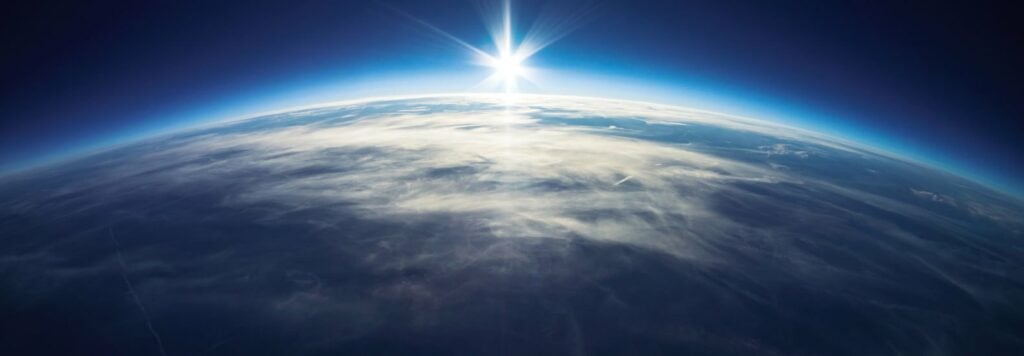Humans began using chlorofluorocarbons or CFCs in the 1920s. These were used in air conditioners, aerosol spray cans, and industrial cleaning products up until the 1970s. CFCs are quite harmful to the environment and can break apart molecules found in the ozone layer. Thus resulting in stratospheric ozone depletion. But did you know how long it takes for CFCs to actually reach the stratosphere for CFCs?
Since chlorofluorocarbons are heavier than air, it takes years to reach the stratosphere and decades for sunlight to convert them into an ozone-depleting form. As a result, the current degradation results from decades.
Observing the Ozone Hole
Studies conducted in the year 2000 showed that is that ozone-depleting chlorofluorocarbons (CFCs) have leveled out in the stratosphere and even decreased in the lower atmosphere, indicating that the ozone layer is recovering.
However, on September 9, 2000, NASA satellites found the greatest Antarctic ozone hole ever recorded, and global climate change may compound the situation. Humanity is currently witnessing the worst-ever ozone hole. Even when CFC levels have finally been brought under control after 13 years of regulation.
The first point is that these processes are really slow. It takes a long time for the CFCs to get up into the stratosphere in the first place, so it’s going to take a long time for them to come back out.
Dr. Richard McPeters, Principal investigator for NASA’s Total Ozone Mapping Spectrometer (TOMS) at the NASA Goddard Space Flight Center (GSFC)
CFCs emitted at the ground level diffuse upward via the troposphere, the lowest layer of the atmosphere. CFCs are pushed up to the stratosphere by the vertical air currents of tropospheric weather. Because stratospheric air has less vertical air movement, CFCs climb more slowly once there.
In fact, a single CFC molecule can take up to two years to reach the stratosphere, where ozone is found, after being emitted on the ground. According to Dr. Charles Jackman, an atmospheric modeler at GSFC, it can take decades for sunlight to transform into a form damaging to the ozone.
NOAA scientists discovered a drop in the level of CFCs in the atmosphere’s lowest layer in 1994. This discovery brought hope that CFC concentrations in the stratosphere would soon begin to drop, as these CFCs would eventually work their way up to the stratosphere, where the ozone is found.
It’ll be a number of years before you start to see real reductions in the CFCs in the stratosphere.
Dr. Richard McPeters, Principal investigator for NASA’s Total Ozone Mapping Spectrometer (TOMS) at the NASA Goddard Space Flight Center (GSFC)
(Source: NASA)
What is the Antarctic Vortex?
Winds also play an important role in ozone depletion. In the winter, the cold air over Antarctica creates a massive whirlpool of fast-moving air that circles Antarctica. This is known as the Antarctic vortex. This vortex effectively keeps Antarctica isolated from the rest of the atmosphere.
It forms up almost as a whirlpool that sits there and is very stable. It locks in that body of air and it keeps the outside high-ozone air from coming in.
Dr. Richard McPeters, Principal investigator for NASA’s Total Ozone Mapping Spectrometer (TOMS) at the NASA Goddard Space Flight Center (GSFC).
The tropics produce the majority of stratospheric ozone because the intensity of the solar radiation that causes ozone formation is greater closer to the equator. Stratospheric air currents transport the ozone to the Arctic and Antarctica.
The strong and stable vortex prevents ozone from migrating into the stratosphere over Antarctica, exacerbating the low levels caused by ice-catalyzed ozone destruction.
The vortex causes temperatures in Antarctica to drop even further by virtually isolating it from the warmer air surrounding it. Lower temperatures cause more ice crystal clouds to form and more ozone to be destroyed. (Source: NASA)
